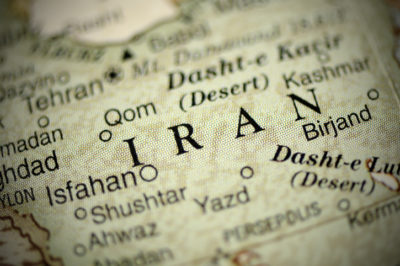At the end of September, Iran launched its largest bombardment in decades against Kurdish targets in Iraq. This unprovoked assault on its neighbor killed at least thirteen people including an American citizen and endangered U.S. troops based in Erbil.
Iran’s purpose in launching this attack was very likely to deflect internal unrest and external criticism of its regime after the death of a Kurdish-Iranian woman who died in the custody of authorities for not wearing a hijab properly. Eyewitnesses reported that Mahsa Amini was severely beaten by Iranian officers, ultimately leading to her death. This ignited a firestorm of civil unrest and widespread rebellion against the government.
As the Iranian regime continues its aggression at home and abroad, the U.S. and its allies should increase pressure on the regime as well as their efforts to support the Iranian people. The U.S. should also take stronger measures to enhance the soft and hard power capabilities of Israel as America’s most reliable regional partner.
Iranian officials, including Ayatollah Ali Khamenei, have publicly blamed Kurdish militants, as well as external influence by the U.S., Saudi Arabia, and Israel, for the ongoing anti-regime movement across the country. The regime aims to depict the internal protests as a regional ethnic struggle exacerbated by foreign maleficence rather than a grassroots movement sparked by Amini’s death.
This latest bombardment of Kurdish militants is the largest single sustained wave of aerial strikes since 2011, whether by Iran or one of its proxy groups, that JINSA has documented in its Iran Projectile Tracker. The 73 ballistic missiles and 20 drones fired on September 28 alone represent the largest coordinated attack that JINSA has recorded to date. After that operation, it was reported publicly that U.S. Central Command scrambled fighter aircraft to shoot down an Iranian Mohajer-6 drone headed toward Erbil where American troops are stationed. Iran’s assault on the Kurdish groups also makes September 2022 the second highest month on record in terms of the number of Iranian-supplied munitions fired, only surpassed by January 2022.
Indeed, Iranian-backed drone, missile, and rocket strikes pose the greatest immediate threat to U.S. service members, partners, and interests in the Middle East. According to JINSA, Iran and its proxies have fired over 590 munitions and deployed nearly 190 drones outside its borders in 2022. This recent attack highlights the increasing threat that Iran’s proliferation of lethal drone technology poses across the region. Further, reports of Iran providing drone capabilities to Russia raises the threat to Ukraine and introduces the possibility of their use elsewhere in Europe.
Both Presidents Biden and Trump signaled a willingness to use force after Iran killed Americans—a redline that Iran continues to probe. Trump responded with military force when Iran crossed the redline, including airstrikes to kill Quds Force commander Major General Qassem Soleimani and Kataib Hezbollah’s commander, Abu Mahdi al-Muhandis. To date Biden’s redline for the use of military force has been even lower than Trump’s, ordering five limited strikes after some, but not all, Iranian-backed attacks that did not have casualties. Yet, Biden has calibrated those responses to prioritize de-escalation and avoid killing militants unless there are American injuries.
The lack of a U.S. retaliation against Iranian aggression now will only encourage the regime to use greater violence against protestors, continue attacking Kurdish groups, and launch even more dangerous strikes that further test the willingness of America and the international community to respond. If the regime does not face significant consequences for its actions, Tehran may conclude that it can kill or injure American s abroad if it avoids targeting areas with a U.S. military presence.
The Biden administration should adopt a much stronger policy towards Iran that includes ending the unproductive nuclear negotiations followed by comprehensive diplomatic, economic, and military pressure to impose direct costs on Iran, not merely its proxies.
In addition, the U.S. should bolster the capabilities of Israel, as the force most actively engaged in deterring and degrading Iranian activity. Immediate decisions such as the expedited delivery to Israel of KC-46 aircraft refueling tankers, precision-guided munitions, combat aircraft like the F-35, the CH-53K helicopter, and additional Arrow, David’s Sling, and Iron Dome batteries as well as their interceptors and support services would send the proper signals to Iran and enhance the capabilities of our most dependable partner.
Moreover, the Biden administration has taken important steps to highlight the regime’s atrocities and enable American companies to aid the protestors, but more can be done to improve communication and internet access inside Iran through the delivery of concealable satellite phones.
The Iranian regime is weak and looking to blame outsiders for its failures. Its aggression—both internal and external—will only grow if left unchecked. Now is the time to ramp up pressure and not let the regime off the hook for its brutality.
LTG Ray Palumbo, (U.S. Army, Ret.) is the former Director for Defense Intelligence and was a participant in the Jewish Institute for National Security of America’s (JINSA) 2021 Generals and Admirals Program. Ari Cicurel is a senior policy analyst at JINSA.
Originally published in RealClearDefense.

